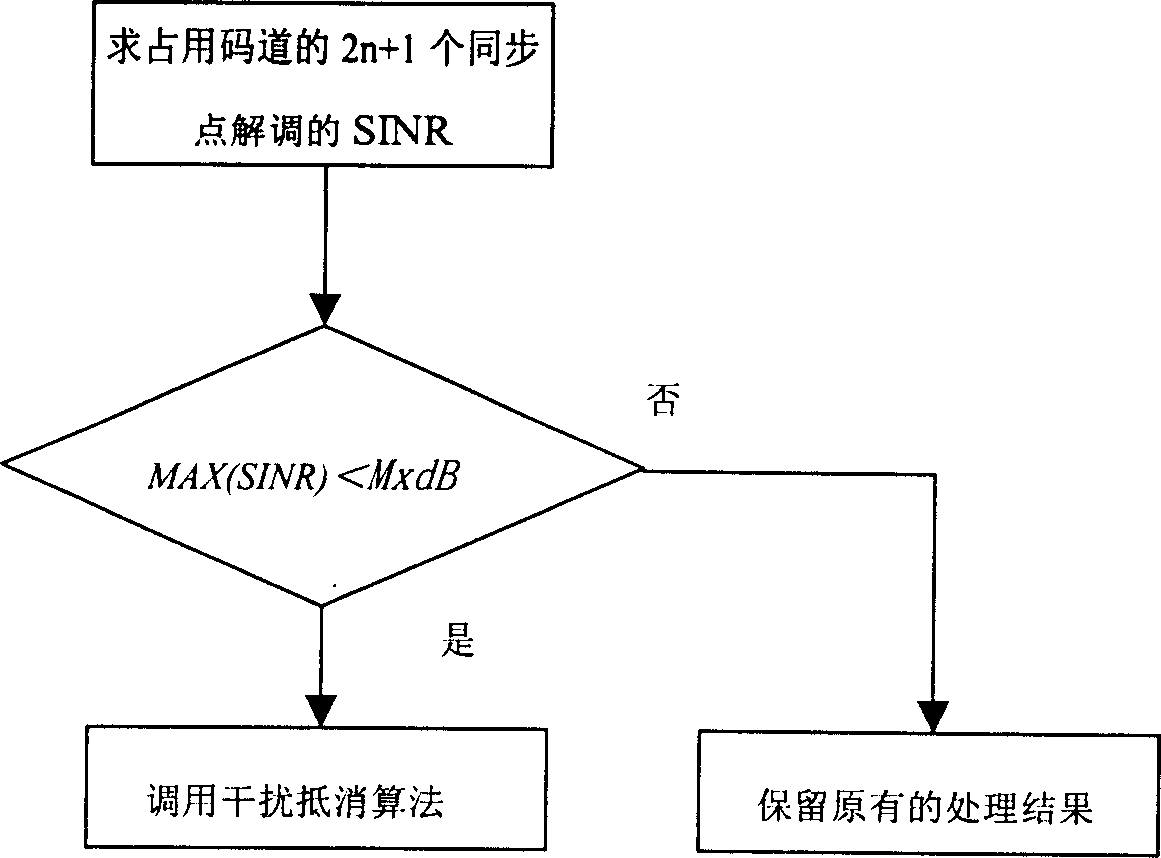Method for restraining interference in intelligent antenna system
An interference suppression, smart antenna technology, applied in antennas, transmission systems, transmission noise suppression and other directions, can solve problems such as reducing the uplink signal-to-noise ratio of the system, and achieve the effect of improving the signal-to-noise ratio, improving beamforming, and improving quality
- Summary
- Abstract
- Description
- Claims
- Application Information
AI Technical Summary
Problems solved by technology
Method used
Image
Examples
example 1
[0034] First, interference detection is performed, and the code channel m is designated at the base station, and the code channel m will no longer be allocated to users during system operation. That is, the code channel m is always idle, and is specially used for interference detection. The base station performs despreading, despreading, and Find the weight (Weight) of each antenna, and perform array signal synthesis according to the obtained weight of each antenna, and find the symbol (Symbol) power.
[0035] Secondly, the occupied code channel is processed to obtain the signal spatial characteristics and interference spatial characteristics. Prior to this, the acquisition of the best synchronization point is carried out, including: despreading the service code channel at a total of 2n+1 synchronization points offset by n sampling points on the left and right of the uplink synchronization point, and calculating the weight of each antenna Value, and according to the obtained...
example 2
[0042] In addition to judging can be used as image 3 The method shown is the same as in Example 1.
[0043] like image 3 As shown, whether to use the interference cancellation algorithm is judged according to the signal-to-interference-noise ratio (SINR). If the maximum SINR of the occupied code channel is less than a certain reference value MxdB, the interference cancellation algorithm is used. Otherwise, the interference cancellation algorithm is not used. The signal-to-interference-noise ratio is the ratio of signal power to interference and noise power, which is a standard for measuring communication quality. SINP = 20 · log 10 ( S I + N ) Calculate, where S is the signal power, I is the interference power, and N is the noise power.
example 3
[0045] First, interference detection is performed, and the code channel m is designated at the base station, and the code channel m will no longer be allocated to users during system operation. That is, the code channel m is always idle, and is specially used for interference detection. The base station despreads the code channel m on the left and right of the uplink synchronization point by n sampling points (fingers), a total of 2n+1 synchronization points, and calculates the weight of each antenna. The weights of the root antennas are used to combine the array signals to obtain the symbol (Symbol) power.
[0046] Secondly, the occupied code channel is processed to obtain the signal spatial characteristics and interference spatial characteristics. Including: despreading the occupied code channel at 2n+1 synchronization points, and calculating the weight value of each antenna, as the signal space feature of the occupied code channel (same as Chinese patent ZL97104039.7); Th...
PUM
 Login to View More
Login to View More Abstract
Description
Claims
Application Information
 Login to View More
Login to View More - R&D
- Intellectual Property
- Life Sciences
- Materials
- Tech Scout
- Unparalleled Data Quality
- Higher Quality Content
- 60% Fewer Hallucinations
Browse by: Latest US Patents, China's latest patents, Technical Efficacy Thesaurus, Application Domain, Technology Topic, Popular Technical Reports.
© 2025 PatSnap. All rights reserved.Legal|Privacy policy|Modern Slavery Act Transparency Statement|Sitemap|About US| Contact US: help@patsnap.com



